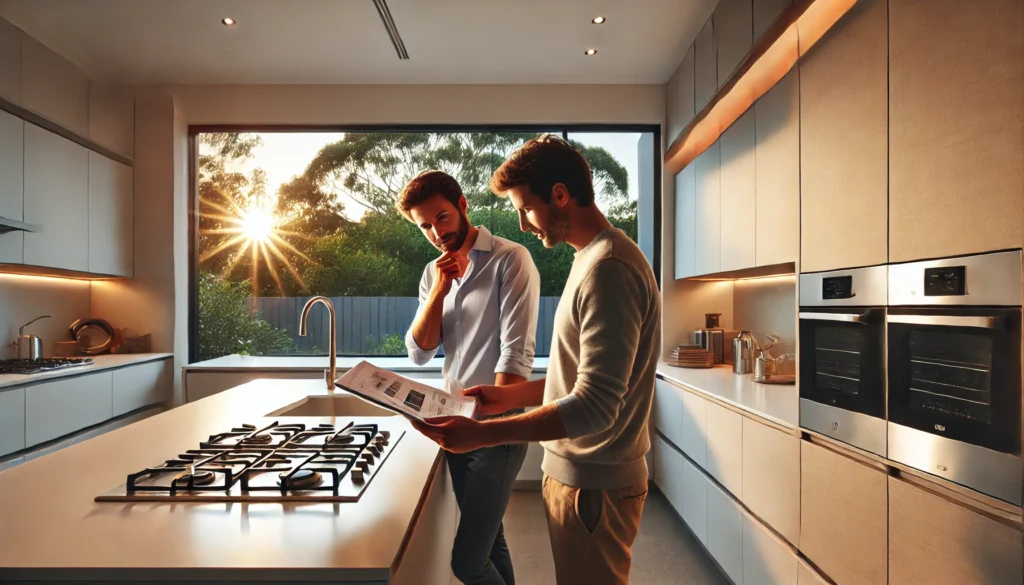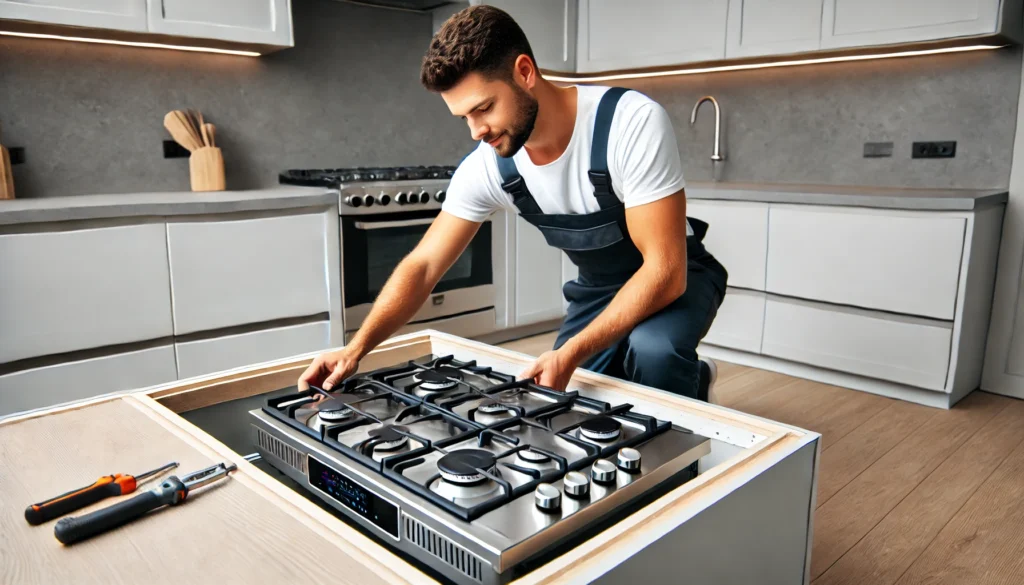

Upgrading your kitchen with a gas cooktop is a game-changer for both home cooks and professional chefs. Gas stoves provide precise temperature control, instant heat, and cost-effective operation, making them a popular choice in Australian households. But before you dive into installing one, there are essential safety considerations, regulations, and steps to follow.
Whether you’re replacing an old cooktop or setting up a new one, proper installation is critical for safety and efficiency. In this guide, we’ll walk you through the pre-installation considerations, step-by-step setup, and post-installation tips to ensure everything runs smoothly.
Important: While this guide covers the installation process in detail, gas cooktop installation must be performed by a licensed professional in Australia. Incorrect installation can lead to gas leaks, safety hazards, and non-compliance with Australian standards.
Installing a gas cooktop is not just about placing it on your countertop and connecting a gas line. It requires careful planning, compliance with safety regulations, and the right tools to ensure a safe and efficient setup. Proper preparation minimizes installation challenges and ensures that your cooktop functions optimally for years to come.

Before you begin, consider factors like kitchen suitability, ventilation, and adherence to Australian gas safety standards. Additionally, gathering the right tools and materials in advance will help streamline the process. Below, we’ll walk you through the key pre-installation steps to ensure a smooth and safe setup.
Gas installations in Australia must comply with AS/NZS 5601.1:2022 Gas Installations Standard, which is designed to ensure the safe and legal operation of gas appliances. Key requirements include:
Ensuring compliance with these regulations is critical for your safety and to avoid legal or warranty issues.
Having the right tools and materials ready before installation will save you time and effort. Here’s a list of essentials:
By taking the time to properly evaluate your kitchen, understand safety standards, and prepare the right tools, you’ll be set for a smooth, hassle-free gas cooktop installation. If in doubt, always consult a licensed professional to ensure safety and compliance.
Installing a gas cooktop is a task that requires precision, safety awareness, and compliance with Australian gas regulations. Whether you’re upgrading an old unit or setting up a brand-new installation, following the correct procedures is crucial to ensure a secure and efficient connection.
Below is a detailed breakdown of the gas cooktop installation process, outlining each step carefully so you can avoid common mistakes and ensure a safe setup.
Before starting the installation, preparation is key. A well-prepared installation site ensures that the cooktop fits properly and that the gas supply is safely managed.
Pro Tip: If adjustments to the countertop are necessary, use a jigsaw with a fine-tooth blade for precision.
Once the installation area is prepared, the next step is to safely connect the cooktop to the gas line.
Important: Only use approved gas hoses and regulators that meet Australian gas safety standards.
Pro Tip: If the gas line is rigid, you may need a flexible gas connector to bridge the gap safely.
To prevent shifting and movement during use, the cooktop must be properly fastened into place.
💡 Pro Tip: If needed, use shims or small spacers to adjust the level before fully securing the unit.
Before using the cooktop, leak testing and burner function checks must be performed to ensure safety.
Pro Tip: If leaks persist despite re-tightening, call a licensed gas fitter—do not attempt further fixes yourself.
Pro Tip: If the flame doesn’t ignite properly, check if the burner caps are aligned correctly—misalignment can block gas flow.
Before wrapping up the installation, perform these final safety and functionality checks:
✔ Double-check all connections one last time.
✔ Ensure the cooktop controls function correctly (adjusting flame levels, turning burners on/off).
✔ Keep a fire extinguisher nearby in case of emergency.
✔ Schedule a professional inspection if you’re unsure about any step.💡 Final Tip: Even if everything appears to be working correctly, it’s highly recommended to have a licensed gas fitter inspect the installation for added peace of mind.
A properly installed gas cooktop is only as good as its maintenance. To ensure optimal performance, safety, and longevity, regular upkeep is essential. By cleaning components, checking for gas leaks, and troubleshooting common issues, you can keep your cooktop running smoothly while preventing potential hazards.

Below, we’ll outline key maintenance practices and solutions for common cooktop issues so you can address problems before they escalate.
Consistent maintenance ensures that your gas cooktop operates efficiently and safely. Here’s what you should do regularly:
Clean Burner Heads Weekly
Check for Gas Leaks Monthly
Schedule Annual Inspections
Even with regular maintenance, gas cooktops can occasionally experience problems. Here’s how to identify and resolve common issues:
Weak or Uneven Flames?
Cause: Clogged burner ports, improper gas pressure, or incorrect burner placement.
Solution:
Smelling Gas?
Cause: Loose connections, damaged gas lines, or an undetected leak.
Solution:
Ignition Issues?
Cause: Dirty igniter, faulty spark module, or moisture buildup.
Solution:
Looking for professional gas cooktop installers near you? A licensed gas plumber can ensure a safe, efficient, and legally compliant installation.
Installing a gas cooktop offers amazing cooking control and energy efficiency, but safety is the top priority. By following the correct installation procedures, testing for leaks, and maintaining your cooktop properly, you can enjoy a hassle-free cooking experience.
Final Reminder: Gas cooktop installation in Australia must be handled by a licensed professional for legal and safety reasons. If you need assistance, consult an expert for peace of mind. Need help installing your gas cooktop? Melbourne Gas Plumber offers expert gas appliance fitting services to ensure your kitchen is safe and compliant.


Fill the form below and we’ll get back ASAP!

MGP! Thank you for help, honest pricing and high quality work. Thank you to Joe for pricing and the boys involved for replacing my hot water tank and fixing my gas leak for a reasonable price. 5 star response, 5 star service and 5 star price.
Joe was great. Very professional and quick. Gas hot water heater needed replacing, he was honest and upfront about what our options were. System was sourced and replaced within a couple of hours.
Fantastic service very responsive Joe is highly recommended and works very clean and neat..... good job well done....very happy... will use again and again

At Melbourne Gas Plumber, we're here to handle all your gas plumbing needs throughout Melbourne. With over 40 years of experience, we bring extensive local knowledge and expertise to every job.
QUICK LINKS
OPENING HOURS
Open 24/7
